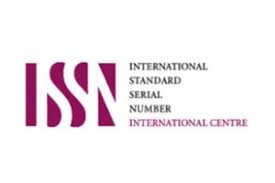Analysis of the usage of artificial intelligence (AI) applications among university students in Malaysia
DOI:
https://doi.org/10.47577/ijitss.v4i.142Keywords:
Artificial Intelligence, Perceived Usefulness, Perceived Ease of Use, Technology Skills, AI Adoption, Higher EducationAbstract
Artificial Intelligence (AI) transforms Education by enhancing personalized learning, automating administrative tasks, and improving student engagement. Despite its growing presence, AI adoption among university students in Malaysia remains limited. This study investigates the level of AI application usage, identifies key factors influencing adoption, and examines the relationship between these factors and actual AI usage. Using the Technology Acceptance Model (TAM), the study focuses on perceived usefulness (PU), perceived ease of use (PEOU), and technological skills as primary determinants of AI adoption. A quantitative research approach was employed, with data collected through a structured survey from 115 undergraduate students at a university in Kedah, Malaysia. After data screening, 105 valid responses were analyzed using descriptive statistics, correlation analysis, and multiple regression analysis. The findings reveal that AI-powered chatbots and academic support tools are the most frequently used applications due to their perceived usefulness and ease of use. However, AI adoption remains moderate, primarily due to limited technological skills and concerns about AI complexity and ethical implications. The study highlights the need for AI literacy programs, improved user-friendly AI designs, and clear ethical policies on AI-assisted learning. Universities should integrate AI training into curricula, and developers should ensure AI accessibility for students with varying technical proficiencies. Future research should explore cultural attitudes, ethical concerns, and trust in AI within educational settings. By addressing these challenges, institutions can enhance AI adoption, ultimately improving student learning outcomes and academic experiences.
Downloads
Downloads
Published
How to Cite
Issue
Section
License
Copyright (c) 2024 Siti Nur Nadirah Binti Mustaffa

This work is licensed under a Creative Commons Attribution-NonCommercial-NoDerivatives 4.0 International License.
All Right Reserved. Copyright © 2020
All articles are published under the terms of the Creative Commons Attribution License (CC-BY). This license permits unrestricted use, distribution, and reproduction provided that the authors, citation details and publisher are clearly identified. For any reuse or distribution, users must make clear that the article is made available under a Creative Commons Attribution license.
If an article is accepted for publication in IJITSS journal, authors will be asked to submit a copyright form through the Open Journal System. Copyright Transfer Form. This transfer will ensure the widest possible dissemination of information. A notification will be sent to the corresponding Author confirming receipt of the manuscript. It is the author's responsibility to ensure that his or her submitted work does not infringe any existing copyright. Authors should obtain permission to reproduce or adapt copyrighted material and provide evidence of approval upon submitting the final version of a manuscript.












